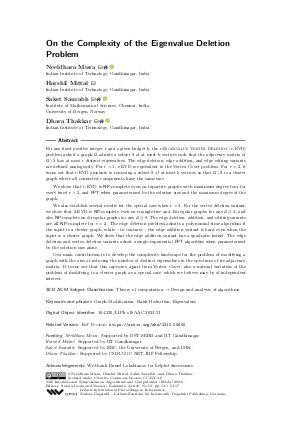LIPIcs.ISAAC.2023.53.pdf
- Filesize: 1.2 MB
- 17 pages

 Creative Commons Attribution 4.0 International license
Creative Commons Attribution 4.0 International license














Feedback for Dagstuhl Publishing